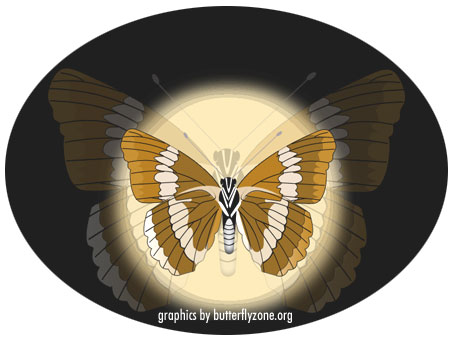Family Identification

There are thousands of butterfly species all around the world. They belong to a group of insects called Lepidoptera. For convenience of identification, they are divided into groups, and each species of butterfly is given a scientific name and a common or local name. The study of butterflies is elaborate and complex, as it is the case with the rest of the insects.
By the look of a butterfly from close quarters, or by picking and examining the one just lying dead from the garden floor or the backyard, one can identify the major group to which the butterfly belongs.
Here are some names of the major groups (families to be more precise). If you are already familiar with some common names, these are the groups to which they belong by their characteristics. If you have the specimen on hand, by looking at the size, color of wings, antennae, legs etc. you can fix the family. To identify the species of course, you need the assistance of your teacher and the library.
Names of families, characteristics and some very common examples:
Brush footed butterflies: This is the largest family. Front legs are short. Fritallries, Admirals, Emperors, Tortoiseshells.
Milkweed butterflies: Adults are reddish orange with black and white markings. Larvae feed on milkweed plants. Monarchs, Plain tigers, Queens.
Whites and Sulfurs: Adults are predominantly white or yellow with black markings. Bath whites, large marbles, Brimstones, Common sulfurs.
Swallowtails: Hind wings have tail like extension. Apollo, Black swallow tails, Eastern festoons.
Blues, Coppers and Hairstreaks: Small butterflies. Hind wings are fluted. Green hair streaks, long tailed hairstreaks, Corals, Great purples.
Skippers: Antennal club is hooked at the tip. Silver spotted skippers, Large whites, Mallows.
It is always necessary from the study point of view, one needs to know at least the common name of any animal if not the family.
